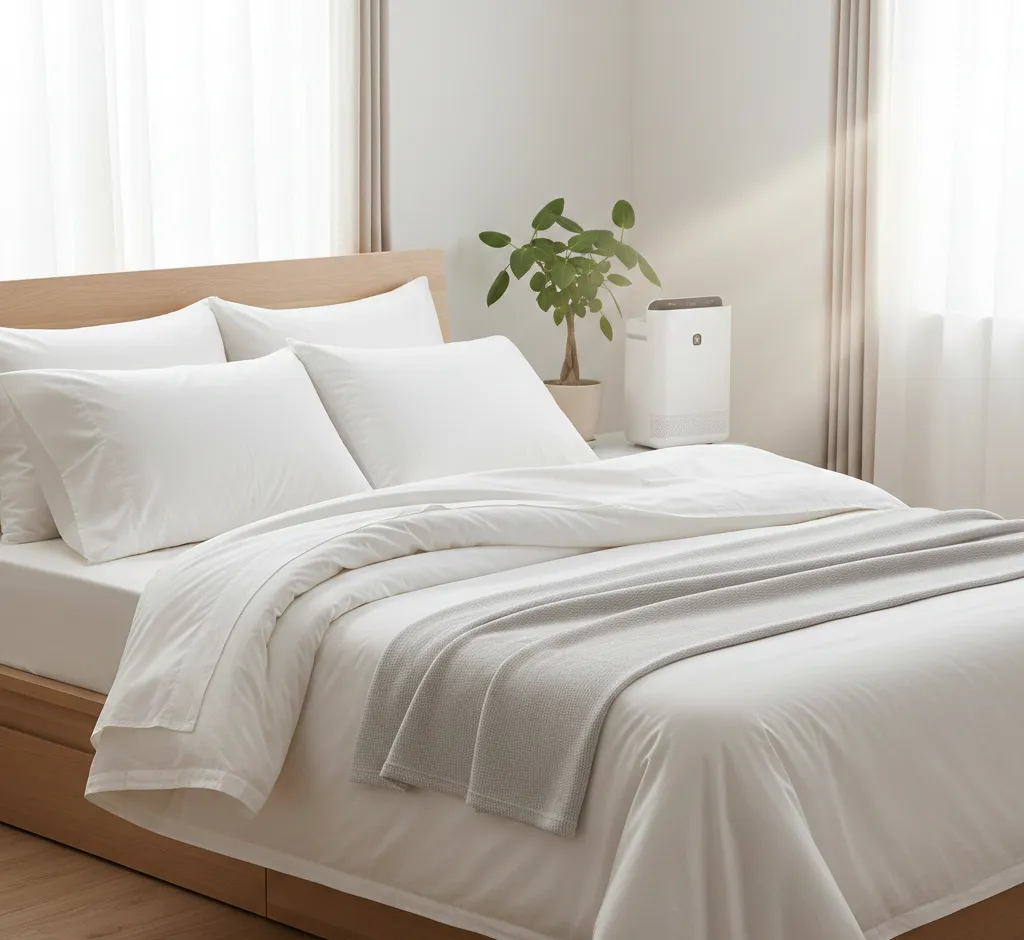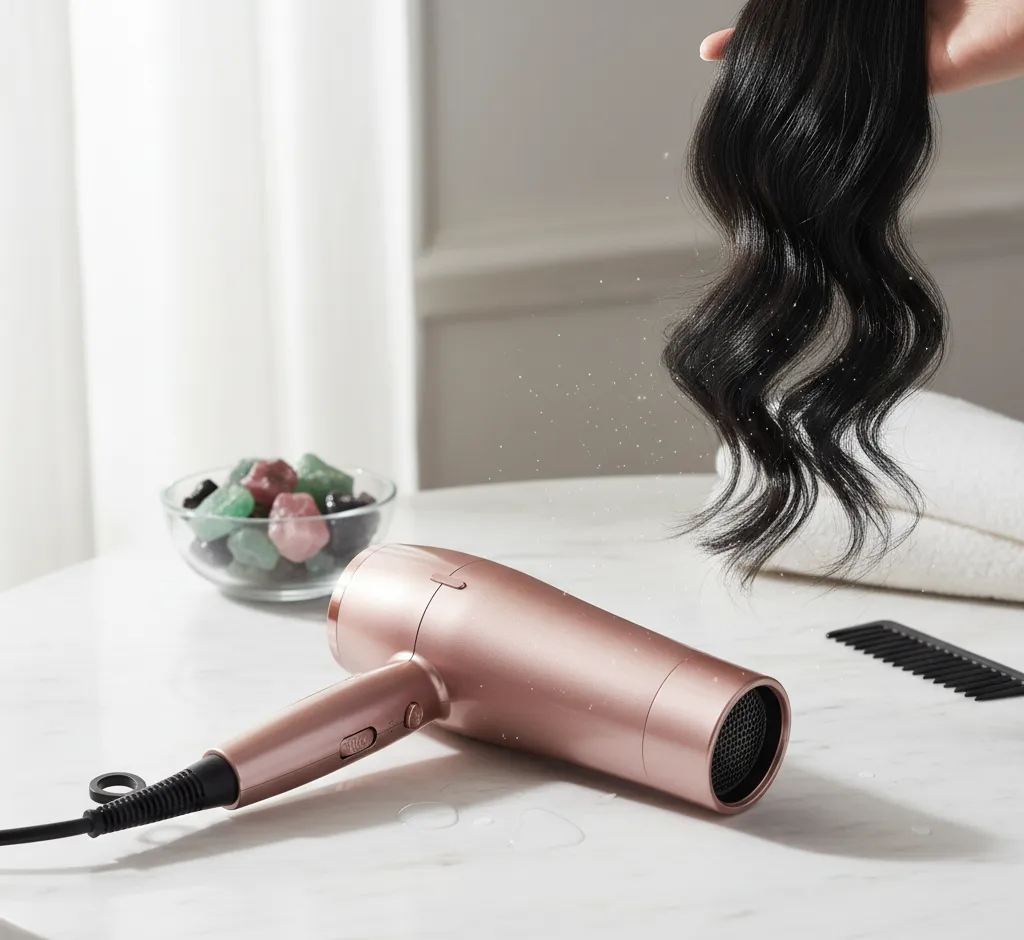How to Pick Bedding for Allergy Sufferers: A Complete Guide to an Allergen‑Smart Bedroom
Learn how to choose hypoallergenic bedding for allergy and asthma sufferers. Discover the best fabrics, fillings, weaves, certifications, and care habits to reduce dust mites, pollen, and pet dander for a healthier, more restful sleep.

Waking up with a stuffy nose, itchy eyes, or a scratchy throat is often a sign that your bedding is harboring allergens such as dust mites, pet dander, mold spores, or pollen. For allergy sufferers and people with asthma or sensitive skin, choosing the right bedding is one of the most powerful ways to improve sleep quality and reduce daily symptoms. The good news is that with a bit of knowledge about materials, weaves, and maintenance, you can turn your bed into a much healthier, low-allergen zone.
Why Bedding Matters for Allergies
Allergens love warm, humid environments where there is plenty of skin flakes and dust—exactly what most beds provide. Standard mattresses, pillows, duvets, and sheets can trap and accumulate dust mites and other irritants over time, even when they look clean. For allergy sufferers, this constant exposure during the night can trigger sneezing, nasal congestion, coughing, wheezing, and skin flare-ups. Thoughtful bedding choices help break this cycle by creating barriers to allergens and making everything easier to keep clean.
By focusing on hypoallergenic fabrics, dust-mite-resistant covers, and regular washing routines, you greatly reduce the amount of allergen exposure every night. This not only eases classic allergy symptoms but can also improve overall sleep quality, energy levels, and even daytime concentration. Selecting allergy-smart bedding is not about buying the most expensive products, but about understanding which features truly make a difference.
Step 1: Understand Your Triggers
Before shopping for new bedding, it is useful to clarify which allergens affect you most. Common bedroom triggers include dust mites, pet dander, mold, and pollen, as well as sensitivities to specific materials like wool, latex, or certain synthetic fibers. If you have had allergy testing, use those results as a guide; if not, note patterns such as worse symptoms in the morning, flare-ups when changing bedding, or increased issues during certain seasons.
Your specific triggers will influence what to prioritize. For example, if dust mites are the main issue, tightly woven encasements and easily washable items will be critical. If pet dander is the problem, choosing smooth, low-pile fabrics that do not trap hair and keeping pets off the bed become higher priorities. For those with eczema or very reactive skin, soft, breathable, and chemical-light fabrics matter as much as allergen control.
Step 2: Choose Allergy-Friendly Fabric Types
The base fabric of your sheets, pillowcases, and duvet covers is one of the most important decisions. Natural, breathable fibers tend to perform better for allergy sufferers because they manage moisture, allow airflow, and can usually be washed at higher temperatures. They are also more comfortable for sensitive skin compared with some coarse or heat-trapping synthetics.
Look for fabrics that balance smoothness, breathability, and practical care. Avoid fabrics that trap heat and sweat, as this creates an ideal microclimate for dust mites and mold. Also be mindful of heavily treated or fragranced textiles if you have chemical sensitivities, as finishes and dyes can cause irritation even when the fabric itself is considered hypoallergenic.
Best Sheet and Cover Materials
- Organic cotton: Soft, breathable, and easy to wash at high temperatures, organic cotton is a classic choice for allergy sufferers. It typically has fewer chemical residues than conventional cotton and is widely available in percale and sateen weaves.
- Bamboo and bamboo blends: Bamboo-based fabrics are naturally silky, moisture-wicking, and often marketed as hypoallergenic. They can help regulate temperature and reduce night sweats, which in turn makes the environment less welcoming to dust mites.
- Tencel / lyocell: Made from wood pulp, Tencel is smooth, breathable, and naturally resistant to bacterial growth. It can be a great choice for people who overheat easily or have sensitive, reactive skin.
- Silk: High-quality silk is tightly woven yet breathable and naturally less hospitable to dust mites. It is especially popular for pillowcases because it is gentle on skin and hair, although it requires delicate care and may not suit all budgets.
Synthetic microfiber can sometimes be labeled as hypoallergenic because it does not contain natural proteins like those found in wool or feathers, but it may trap heat and hold onto dust. If you choose microfiber, prioritize tightly woven, smooth finishes and commit to frequent washing to keep allergen build-up low.
Step 3: Pick the Right Fillings
Beyond the outer fabric, the filling of your pillow, duvet, and mattress topper plays a major role in allergy control. Traditional feather and down, while luxurious, can be problematic for some people—either because of true feather allergies or because these fillings are more difficult to wash thoroughly. Modern alternatives can mimic the loft and warmth of down while being more allergy-friendly and lower maintenance.
When comparing fillings, consider how often they can be washed, whether they retain moisture, and how well they resist dust mites and mold. Also take into account any personal material sensitivities; for instance, some individuals react to wool or latex, even when those materials are generally considered hypoallergenic.
Pillows and Duvets: Allergy-Smart Options
- Down-alternative / microfibre fill: These synthetic fillings aim to give a similar feel to down while being less likely to trigger allergies and usually being machine-washable. Look for versions specifically labeled as hypoallergenic or anti-allergy.
- Wool: High-quality wool is naturally moisture-regulating and resistant to dust mites when properly processed and maintained. Wool duvets and mattress toppers can provide year-round comfort, but should be avoided if you have a known wool allergy.
- Bamboo or plant-based fills: Some duvets and pillows use bamboo or other plant-derived fibers as filling. These are typically breathable, moisture-wicking, and more resistant to mold and mildew than some synthetic fills.
- Latex (for pillows and toppers): Natural latex resists dust mites and mold and offers good support, particularly for neck and spine alignment. Only choose latex if you are certain you do not have a latex allergy.
If you love the feel of down but react to it, consider switching to a high-quality down-alternative for pillows and duvets while preserving warmth and softness. For children and those with asthma, washable synthetic or plant-based fills are often the most practical and hygienic solution.
Step 4: Pay Attention to Weave, Thread Count, and Pore Size
Not all fabric labeled as cotton or bamboo offers the same level of allergen protection. Weave density and pore size—the tiny gaps between threads—determine how well a fabric blocks dust mites and other particles. In general, a tighter weave with a small pore size is better at creating a physical barrier without sacrificing breathability.
Many anti-allergy covers for pillows and mattresses specify a pore size (often below 10 microns) designed to keep dust mites from passing through. For sheets and duvet covers, a percale or sateen weave with a moderate-to-high thread count usually provides a smooth, tightly woven surface that is still comfortable and cool.
How to Read Thread Count for Allergies
- Skip extremely low thread counts, as these fabrics tend to have larger gaps where allergens can collect and pass through more easily.
- A mid to high thread count (for example, roughly 200–400 in cotton) is often a sweet spot that balances barrier properties with breathability and softness.
- Very high thread counts are not always better; they can reduce airflow and trap heat, which may encourage sweating and dust-mite growth.
When in doubt, prioritize labels that mention dust-mite-proof, allergen-barrier, or anti-allergy properties and check whether the manufacturer provides pore-size information or independent certification.
Step 5: Use Protective Encasements and Covers
Even the best mattress and pillows will accumulate allergens over time if left unprotected. Fully zippered encasements for your mattress and pillows form a physical barrier that keeps dust mites and their droppings from reaching you while you sleep. These encasements are particularly crucial for people with dust-mite allergies or asthma.
Look for encasements made from tightly woven, breathable fabrics rather than plastic-feeling covers that trap heat and crinkle with movement. Modern designs often use smooth, stretch-knit or microfibre fabrics that feel more like standard bedding while still offering effective protection. Ensure that zippers close completely and, ideally, have a small flap to cover the end of the zipper for a better seal.
Essential Protective Layers
- Mattress encasement: A fully encasing, dust-mite-proof cover is one of the most impactful investments for allergy management. Keep it on permanently and wash according to the manufacturer’s instructions.
- Pillow protectors: Zippered anti-allergy pillow covers add a barrier between you and the pillow filling, especially useful if your pillows are not washed frequently.
- Mattress toppers: If your mattress is older, pairing an encasement with a washable hypoallergenic topper can improve both comfort and hygiene.
These protective barriers do not replace regular washing, but they significantly slow down allergen build-up and make it easier to maintain a healthier sleep surface.
Step 6: Look for Trusted Certifications and Labels
Marketing terms like “hypoallergenic” are not always strictly regulated, so it helps to look for bedding that has been tested or endorsed by reputable health or allergy organizations. Certifications signal that the product has met certain criteria for allergen control, chemical safety, or material quality.
Common indicators include endorsements from national allergy and asthma foundations, dermatology associations, or environmental and organic textile standards. These labels can reduce the guesswork and provide extra reassurance that the product supports a low-allergen sleep environment.
Examples of Helpful Labels
- Certification from allergy or asthma organizations stating the product is suitable for allergy sufferers.
- Textile standards that limit the use of harsh chemicals and residues, which is especially helpful for those with sensitive skin.
- Organic certifications for cotton and other natural fibers, indicating lower pesticide and chemical use during production.
While certifications are useful, they should be weighed alongside real-world factors like washability, breathability, and your own comfort preferences.
Step 7: Build an Allergy-Smart Bedding Set
Creating an allergy-friendly bed does not require replacing everything at once. A strategic, layered approach allows you to prioritize the items that make the biggest difference while staying within your budget. Start with high-impact pieces, then gradually upgrade the rest as needed.
Begin with foundation items that are hardest to clean—like the mattress and pillows—and then move outward to sheets, duvet covers, and blankets. This ensures that the layers closest to your face and body are both comfortable and protective.
Priority Bedding Upgrades
- Mattress encasement: Protects a major source of dust mites and is rarely laundered, so it should be one of the first purchases.
- Pillow protectors and pillows: Choose hypoallergenic pillows and encase them, since your face is in direct contact with them all night.
- Sheets and pillowcases: Opt for breathable, natural fabrics that can withstand regular hot washes.
- Duvet / comforter: Select a hypoallergenic filling and a duvet cover that is easy to remove and wash.
- Blankets and throws: Avoid heavy, hard-to-wash layers that collect dust; choose washable, low-shedding options instead.
Once you have these basics in place, you can refine your setup by experimenting with different materials and weights for each season, always keeping ease of washing and allergen resistance in mind.
Step 8: Establish an Allergy-Friendly Laundry Routine
Even the best hypoallergenic bedding loses effectiveness if it is rarely cleaned. For allergy sufferers, regular, thorough washing is essential to keep dust mites, pollen, and pet dander under control. Most experts recommend washing sheets and pillowcases at least once a week, and ideally in warm to hot water if the fabric allows.
Use fragrance-free, dye-free detergents if you are sensitive to chemicals or strong scents, and avoid heavy fabric softeners that may leave residues on fibers. Proper drying, preferably on a high setting if the care instructions permit, helps kill remaining mites and prevents dampness that could promote mold.
Recommended Washing Schedule
- Sheets and pillowcases: Wash every 7 days, or more often during peak allergy seasons or if you share your bed with pets.
- Duvet covers and blankets: Wash every 2–4 weeks, adjusting frequency based on usage and symptom severity.
- Pillow protectors and mattress encasements: Wash every 1–3 months, or as directed by the manufacturer.
- Pillows and duvets: Wash a few times per year if machine-washable; otherwise, follow professional cleaning recommendations.
Whenever possible, avoid drying bedding outdoors during high-pollen seasons, as pollen can settle on fabrics; instead, use a tumble dryer or indoor drying rack.
Step 9: Control the Whole Sleep Environment
Allergy-friendly bedding is most effective when combined with broader environmental control in the bedroom. Minimizing dust accumulation, controlling humidity, and keeping irritants out of the room will amplify the benefits of your bedding choices. Think of your bed as part of an integrated, allergen-aware ecosystem rather than an isolated element.
Simple habits, such as vacuuming regularly with a HEPA filter, decluttering surfaces, and using air filtration, can significantly reduce the overall allergen load. These steps particularly help those who experience asthma flare-ups at night or notice that symptoms worsen in the bedroom compared with other areas of the home.
Additional Bedroom Strategies
- Keep pets out of the bedroom, or at least off the bed, to limit dander and hair on your bedding.
- Use a high-quality air purifier with a HEPA filter to capture airborne allergens such as pollen, dust, and pet dander.
- Maintain indoor humidity around a moderate level (often recommended in the 40–50% range) to discourage dust mites and mold.
- Choose simple, washable window treatments and minimize heavy drapes, fabric headboards, and clutter that can trap dust.
Integrating these steps with carefully chosen bedding will give you the best chance of waking up clearer, more refreshed, and less congested.
Step 10: Tailor Bedding Choices to Seasons and Personal Comfort
Allergy-friendly bedding should also be comfortable and appropriate for your climate; otherwise, it will be difficult to use consistently. Overly warm or heavy bedding can increase sweating and humidity, encouraging dust mites, while bedding that is too light can disrupt sleep due to temperature discomfort. Seasonal layering with washable, hypoallergenic pieces allows you to stay comfortable while maintaining an allergen-conscious setup.
Consider owning separate duvets or blankets for warmer and cooler months, both made from materials that align with your allergen needs. Pair them with breathable sheets that feel good against your skin year-round, and do not be afraid to adjust combinations until you find the right balance of warmth and lightness.
Final Thoughts: Creating a Healthier Bed, One Layer at a Time
Picking bedding for allergy sufferers is about more than a single purchase; it is a strategy that combines smart materials, thoughtful construction, and consistent care. By understanding your triggers, choosing breathable hypoallergenic fabrics, investing in quality encasements, and following a regular laundry routine, you can dramatically reduce nighttime exposure to allergens. These changes often translate into deeper sleep, fewer morning symptoms, and a more comfortable life overall.
You do not need to overhaul your entire bedroom overnight. Start with the pieces that matter most—such as your mattress and pillows—then gradually upgrade sheets, duvets, and accessories as your budget allows. Over time, each layer you improve brings you closer to an environment where sleep supports your health instead of undermining it.


